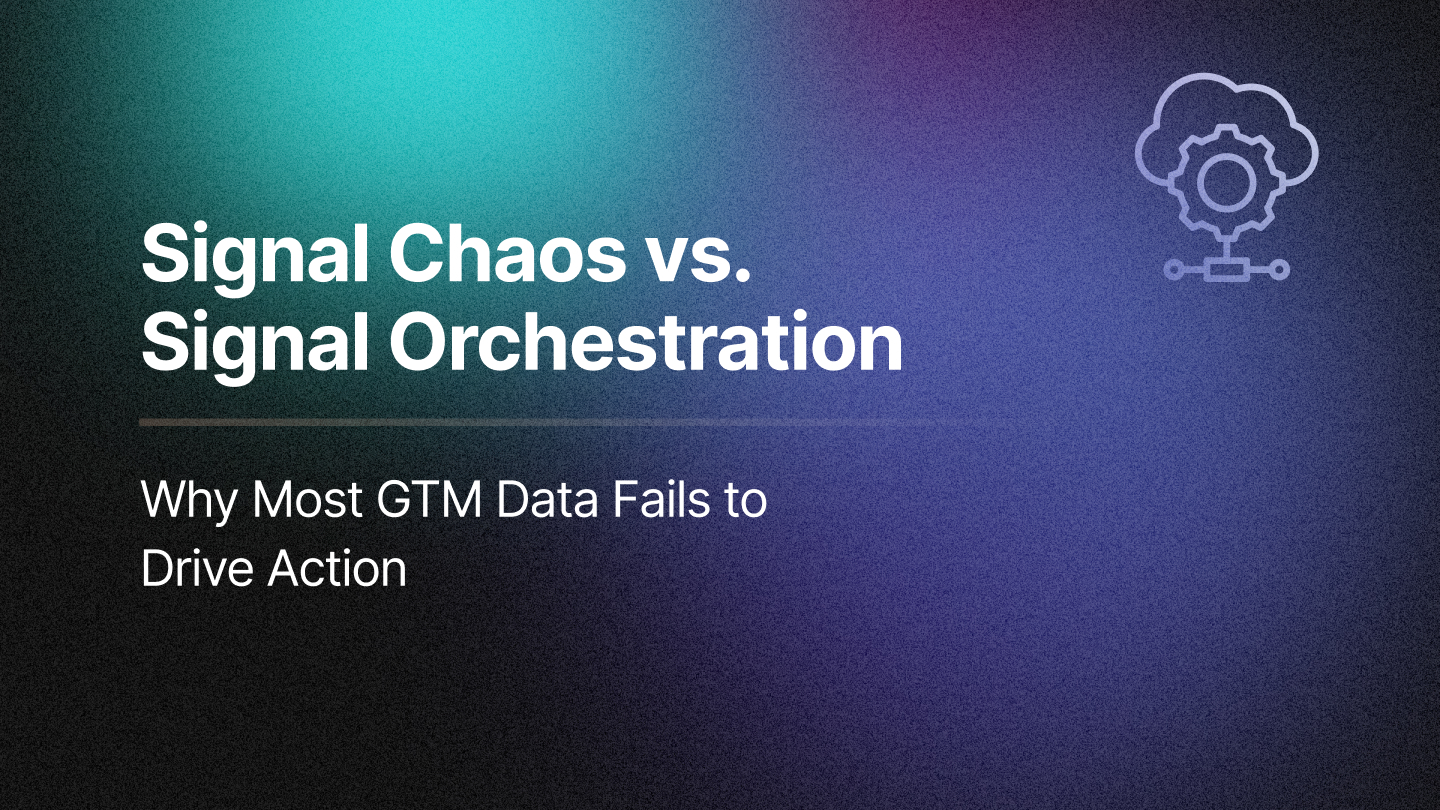Modern GTM teams live in an era of abundance, not of time or clarity, but of signals. Every click, visit, registration, or intent feed screams for attention. Yet instead of making teams sharper, this deluge often paralyzes decision-making. SDRs chase alerts that never convert, while marketers double down on channels that appear “active” but fail to produce pipeline.
The irony is that despite having more data than ever, teams often feel less certain about where to act. The problem isn’t too few signals; it’s too many. And when everything looks important, nothing truly is.
More Data, Less Clarity
The behavioral footprint of a single buying group today is massive: spanning website sessions, pricing page views, product usage, ad interactions, and event participation. But when all of these interactions are treated as equal, context is lost.
When signals aren’t prioritized, GTM teams experience a double failure: they lose focus, scattering their outreach, and they misallocate resources toward activity volume rather than momentum. The result is predictable- slower responses to genuine intent, wasted SDR cycles, and inefficient marketing spend.
To accelerate the pipeline, GTM organizations must shift from reactive signal collection to intelligent signal prioritization, a discipline that distinguishes meaningful buyer momentum from background noise.
Why Signal Prioritization Matters
Every signal carries a fragment of the buyer’s story. But without a prioritization framework, that story becomes incoherent. When teams lack such a framework, they end up chasing weak alerts, funding low-value channels, and missing out on the very opportunities that could have converted fastest.
Signal prioritization provides structure. It ensures GTM teams focus their energy on signals that statistically correlate with revenue acceleration, thereby transforming engagement data into a sequence of informed decisions rather than reactive guesses.
Defining a Signal Hierarchy
The cornerstone of signal prioritization is a signal hierarchy, a framework that ranks signals by their predictive strength. While the specifics vary by business model, strong buying signals usually share three traits:
- Multi-threaded engagement: Multiple personas from the same account engage across channels, signaling coordinated internal interest rather than isolated curiosity.
- Acceleration in activity: Engagement frequency and depth spike within a short time window, indicating momentum toward evaluation or purchase.
- Meaningful touchpoints: High-value actions, such as pricing page visits, product usage spikes, demo requests, or direct conversations with sales, carry more predictive weight than passive content consumption.
Weaker signals, such as webinar sign-ups or blog reads, still contribute to awareness and nurturing but shouldn’t trigger immediate action. A clear hierarchy enables GTM teams to prioritize, nurture, and park effectively.
Combining Signals for Precision
No single signal guarantees intent. True clarity emerges when signals are analyzed together to reveal patterns of coordinated behavior. A webinar registration alone might indicate interest, but combine it with a pricing page visit and new contact creation in the same account, and it becomes a buying cluster. A spike in product usage could be ambiguous on its own, but paired with outbound engagement and ad clicks, it signals expansion potential.
These combinations transform disconnected data points into coherent behavioral narratives. RevSure’s Buyer Journey Analysis operationalizes this process by connecting touchpoints across personas and channels, surfacing patterns that reveal where real buying momentum exists.
Operationalizing Signal Prioritization
A signal hierarchy is valuable only when it becomes actionable. To operationalize prioritization, organizations need three key layers working in harmony.
The first is data unification, consolidating all signals into a single source of truth. Fragmented systems such as CRMs, MAPs, and intent tools obscure visibility, making it impossible to see full-funnel interactions.
The second layer involves scoring and classification frameworks. Teams must move beyond simple engagement counts to scoring models that evaluate the strength and sequence of interactions. Predictive modeling, historical win-loss data, and heuristic rules can all help identify the signal combinations most correlated with opportunity creation.
Finally, integrated activation ensures prioritized signals automatically trigger GTM plays across CRMs, sales engagement tools, and marketing automation systems.
For example, when RevSure’s Account & Lead Prioritization scores flow directly into outreach workflows, high-value accounts get attention at the exact right moment — without manual intervention.
.png)
The Strategic Impact of Getting It Right
Organizations that excel at signal prioritization unlock measurable advantages across their GTM engines:
- Higher conversion rates: SDRs concentrate on high-intent accounts, improving meeting-to-opportunity ratios.
- Faster pipeline velocity: Teams detect and act on buyer intent earlier, shortening the sales cycle.
- Smarter budget allocation: Marketing investment flows toward channels producing compounding, revenue-linked signals.
- More predictable forecasting: Prioritized signals become leading indicators, enhancing accuracy and confidence in projections.
This isn’t theory; it’s executional leverage. Teams that understand signal hierarchy and operationalize it outperform competitors in both efficiency and precision.
Moving Beyond Volume to Velocity
Volume used to be the growth mantra. But in the age of signal abundance, volume without prioritization creates noise, not momentum. The GTM organizations that win are those that move from reactive execution to signal-led orchestration, where each action is guided by data that truly matters.
Pipeline acceleration doesn’t come from chasing every alert. It comes from knowing which signals matter most, when to act, and how to align the entire GTM motion behind them.
Once teams make that shift, they stop running after noise and start conducting velocity, turning data into direction, and direction into predictable, compounding growth.
Related Blogs







